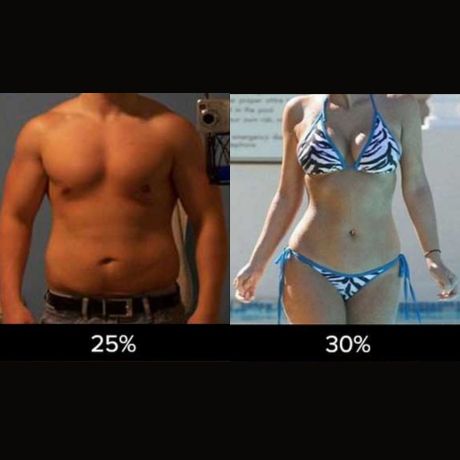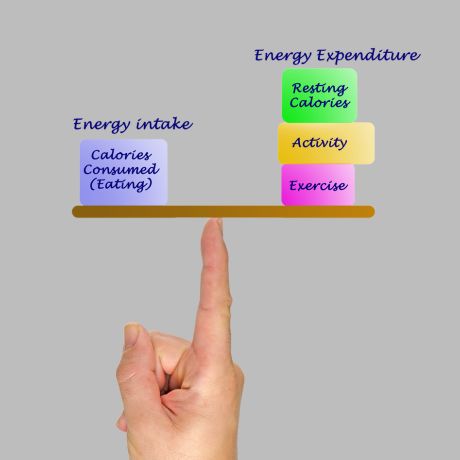In the current fitness landscape, data is king. We have devices that track our steps, sleep, heart rate, heart rate variability, bar velocity, and more. These tools are becoming a part of everyday fitness life. However, we don't need fancy technology to provide valuable insight into our training and nutrition. In fact, I will provide you with six low-tech formulas that can shape how you eat and train.
We will cover each formula's what, when, why, and how. My goal is for you to run the numbers yourself and understand how you got them. Don't worry. You don't need an advanced math degree to do this. All the formulas are simple, and I will do my best to break them down in an easy-to-understand manner.
Take Your Fitness To The Next Level
Before we start, the important thing to remember with formulas is that they are all estimations. None of the numbers will be 100% exact. However, that's fine. For our purposes, just being close is good enough. The formulas are tools and guides, not ironclad prescriptions.
Table of contents:
- 1 RM Formula
- Lean Body Mass Calculator
- Target Weight Formula
- Target Heart Rate Formula
- TDEE Calorie Calculator
- Macronutrient Calculator
- FAQs

1. 1RM Formula
Let's start with a formula you will likely use frequently, especially if you follow strength programs. Having an accurate value for your one rep max helps you program more effectively and is a way to gauge progress. The problem is, you probably don't max out all of the time. Nor should you. So, what do you do in this situation?
If you are like most, you think back to your all-time best lifts. When presented with the question, what is your squat max? The 405lb squat you hit back in 2019 comes to mind. Unfortunately, that doesn't mean much in 2024. There is a better way.
1 RM Formula: Projected Max = (weight x reps x .033) + weight
Instead of basing your one rep max off your last personal record, you can calculate your projected max using a formula. All you need to do is use your last near-max set. Using a set where you did five reps or less is best.
Here is an example of how the formula would work if you did a hard set of 315 lbs for five reps the other day.
Projected Max = (315lbs x 5 reps x .033) + 315lbs
Projected Max = 367lbs
It's not perfect, but the formula is accurate.
What if the set of five was not to absolute failure? We can use reps in reserve (RIR) to adjust for that. Using the above example, let's say you left one rep in reserve, meaning you stopped at five reps, but if you went to failure, you could have done six. In this situation, use six as your rep number in the formula. However, be careful with this. You must be sure you could get the extra rep.
Projected Max = (315lbs x 6 reps x .033) + 315lbs
Projected Max = 378lbs
You can find this very simple calculator here.
Related: 1RM Calculators

2. Lean Body Mass Calculator
A lean body mass calculator is only somewhat useful by itself, but knowing your lean body mass comes in handy for other fitness formulas on the list, especially when you want to lose weight.
Simply put, lean body mass is your overall body weight minus your body fat. It's just subtracting your body fat from your total weight.
Lean Body Mass = Total body Weight - Fat Mass
The key is finding fat mass, which requires a little calculation. First, we need to estimate your body fat percentage. Notice that I said estimate. All forms of body fat analysis are estimations. Some are just better guesses than others. If you have access to body composition tests like a Dexa Scan, Bod Pod, Bioelectrical Impedance scale, or someone skilled with skin calipers, use that value for your body fat.
Otherwise, I have an easy yet unscientific range to get us in the ballpark. The discrepancy between men and women comes down to different levels of essential body fat. It's between 2-4% for men, and for women, it's 8-12%. So, there is about an 8% difference between men and women at the same level of leanness.
Body Fat Visual Estimation
I'll go over the generally accepted visual cues for determining your body fat without scientific equipment.

Under 8% body fat for men and under 16% body fat for women
Don't believe some of the numbers you hear from athletes. I still remember when NFL running back Le'veon Bell said he was 2.9% body fat. That is not accurate. Most bodybuilders who are competition lean and near death are in the 4-6% body fat range.
If you are under 8% body fat for men and under 16% for women, you are incredibly lean and don't need to lose any more fat unless you are a few weeks from a bodybuilding show. Being this shredded is hard to maintain. If you are this lean, you know it.

9-12% Men / 17-20% Women
Most people strive for this level of leanness. You have a full six-pack if you are a man in this range and a solid four-pack if you are a girl. This is about as lean as you can comfortably maintain.

13-17% Men / 21-25% Women
In this range, men have a blurry six-pack or a solid four-pack. Women are still lean with some muscle definition but no abs. If you are in this body fat range, you are "healthy lean." There is no reason to lose fat unless you want to for aesthetic reasons.

18-25% Men / 26-33% Women
This body fat range is the most common spot for men and women to be at. Even your average gym goer will be in this range, but they will likely carry a little more muscle mass, which makes their appearance look better than an average person walking on the street.

26%+ Men / 34%+ Women
The only defining characteristic of this category is the need to focus on fat loss. It doesn't matter where you fall on the spectrum. Just make your best guess and start from there. Remember, all of these numbers are just an estimate anyway.
Back to the LBM Formula
Once we estimate our body fat, we can figure out our lean body mass. It's best shown through an example.
165lb male at 12% body fat
First, we need to calculate the fat mass of this individual.
165 x .12 (12%) = 19.8lbs of fat mass
Let's return to the LBM formula and plug the numbers in.
Lean Body Mass = Total body Weight - Fat Mass
LBM = 165lbs - 19.8lbs
LBM = 145.2lbs
A calculator can be found following this link.

3. Target Weight Formula
The target weight formula is one of my favorite fitness tools. When starting a weight loss journey, knowing how much weight you need to lose can be very challenging. Typically, we have a look we want to achieve, and it's just a question of how to get there.
If you have a general idea of your current body fat percentage and your goal body fat percentage, we can use a formula to determine how much weight you need to lose to achieve it.
A couple of words of caution before we get into it. One, have realistic expectations for your goal body fat percentage. Reread the body fat visual estimations above. Two, don't take the target weight the formula gives you as the exact weight you need to get to. Your target weight will be a range of +/- a few pounds. Additionally, you may change your goal body fat percentage as you start losing weight.
Target Weight = lean body weight / [1-(target body fat percentage / 100)]
Let's use our example from above. The 165-pound man at 12% body fat with 145 pounds of lean body mass wants to get shredded (meaning get his body fat percentage down to 8%).
Target Weight = 145 / [1-(8/100)]
Target Weight = 145 / .92
Target Weight = 157.6lbs
Current Weight (165 lbs) - Target Weight (157.6 lbs) = 7.4 lbs fat loss
According to the formula, our 165-pound man would need to lose a little over seven pounds to get to 8% body fat.
While we tried to make it as simple and clear as possible, but if you're still having trouble grasping it, you can check out this very handy target weight calculator.

4. Target Heart Rate Formula
If the math on the previous three formulas makes your head spin, I will give you a little break with this one. The target heart rate formula is simple. It's a two-step process of finding your max heart rate and the target heart rate you want to train in.
Step 1: Find your maximum heart rate. Your maximum heart rate is based on your age. The formula is 220 - your age.
Max Heart Rate = 220 – age
I am 32 years old, so my max heart rate estimation is 220-32, so 188 beats per minute.
Step 2: Once we have our max heart rate, we must multiply it by how hard we want to do cardio. Doing so gives us our target heart rate zone.
- 50-60% Very Light: Warm-up, cool down, active recovery.
- 60-70% Light: Perfect for low-intensity steady-state cardio.
- 70-80% Moderate: Perfect for moderate intensity steady state cardio (MISS).
- 80-90% Hard: Perfect for High-Intensity Interval Training (HIIT).
- 90-100% Max: For fit athletes to reach for brief durations.
For example, I would multiply my age-predicted max heart rate (188) by 70-80% if I wanted moderate steady-state cardio.
188 x (.70) = 131.6
188 x (.80) = 150.4
Based on this, my heart rate range for MISS is 130-150 beats per minute.
This calculator also lets you enter your resting heart rate, for an even more accurate assessment.

5. TDEE Calorie Calculator
Total Daily Energy Expenditure (TDEE) is the total calories your body burns daily. In other words, it's your maintenance daily calorie intake. You can use many advanced formulas, like the Mifflin St Jeor Equation, but a simple calculation works just as well.
Step 1: Calculate Resting Metabolic Rate (RMR)
To find your RMR, multiply your body weight by ten if you are a man and by nine if you are a woman.
RMR = bodyweight x 10 (men)
RMR = bodyweight x 9 (women)
This basic calculation works great as long as you have an average body composition. However, if you are 26%+ body fat as a man or 34%+ body fat as a woman, use your target body weight, not your actual body weight.
Example:
RMR = 165 lbs x 10
RMR = 1650
Step 2: Multiply calculated RMR by a physical activity multiplier to get TDEE
RMR is the amount of calories you burn at rest without any activity. To account for daily activity, we multiply RMR by 1.2 to 2.2, depending on how active you are. Be honest with yourself here. It's all about calories burned. Account for your daily exercise routines, steps, job, lifestyle, etc.
Sedentary: 1.2-1.3
Moderately Active: 1.4-1.7
Highly Active: 1.8-2.2
Example:
TDEE = RMR x Activity Multiplier
TDEE = 1650 x 1.4 (moderately active)
TDEE = 2310 calories
As mentioned, your TDEE is the calories you need to maintain your body weight. You don't need to go any further if that is your goal. Make your daily calorie goal your calculated TDEE and build a nutrition plan around that. However, if you want to build muscle or lose fat, we need to adjust the TDEE value up or down, respectively.
The good news is that once you know your TDEE, calculating your daily caloric intake up or down based on your fitness goals is easy. I recommend increasing or decreasing your calories by about 10-20%.
Fat Loss Example
TDEE = 2310 calories
Reduce calories by 10-20% (231-462) to create a calorie deficit
Fat Loss Calories = 2310 - 10-20% = 1848-2079 calories
Muscle Gain Example
For muscle gain, we do the opposite.
TDEE = 2310 calories
Increase calories by 10-20% (231-462) to create a calorie surplus
Muscle Building Calories = 2310 + 10-20% = 2541-2772 calories
For a more in-depth TDEE calculator, you can check out the one here.

6. Macronutrient Formula
Knowing how many calories you need to eat is great, but what about macros? The last formula we cover is not a formula per se; it's a series of calculations. Figuring out your macronutrients comes down to calculating each value, starting with protein. Going through this process will give you a comprehensive understanding of how to put together a nutrition plan.
Protein
Calculating protein intake is easy. To build and maintain muscle, you want to consume between .7-1g of protein per pound of body weight. Similar to the RMR calculation, .7-1g per pound works great with an average body weight. However, if you are 26%+ body fat as a man or 34%+ body fat as a woman, use your target body weight, not your actual body weight, to base your protein intake. It should be noted for later on that 1g of protein is 4 calories.
Example: 165lbs male at 12% body fat
Protein intake: 165 x .7g-1g = 115.5g-165g
Fat
Once we have our protein needs figured out, the next step is fat. There is a wide range of acceptable fat intake. It all depends on personal preference. Fat and carbs work in an inverse relationship. The higher your fat intake, the lower your carbs, and vice versa.
For most, fat should be somewhere in the 20-35% of the daily calorie range.
For our 165lb male eating at maintenance (2310 calories), his fat intake would be between 50g and 90g.
I got those numbers by multiplying 2310 by .2 (20%) and .35 (35%) and dividing the values by 9 since fat has 9 calories per gram.
Example:
2310 x .2 = 462 / 9 = 51.3g
2310 x .35 = 808.5 / 9 = 89.8g
Carbohydrates
When we have our protein and fat goals, the remaining calories go toward carbohydrates. So, when you pick your fat intake, you also choose your carb intake by default.
Let's run through an example.
165lbs male with a calorie goal of 2310
Protein: 165 x 1g per pound of BW = 165g of protein (165 x 4 = 660 calories)
Fat: 2310 calories x .25 (25% calories from fat) = 64g of fat (64 x 9 = 576 calories)
Carbs: 2310 - 660 (protein calories) - 576 (fat calories) = 1074 calories left over for carbs. Since carbs are 4 calories per gram, you divide 1074 by 4 to get 269g of carbs.
Daily Macro Breakdown:
Protein: 165g
Fat: 64g
Carbs: 269g
We think we did a great job explaining how to calculate your macros, but if you're still struggling, you can use this calculator.

FAQs
More questions about calculators & tools every fitness enthusiast needs? Let's answer them.
What is the best fitness calculator?
The best fitness calculator is subjective and depends on your specific goals and preferences. Some popular options include the 1RM (One Repetition Maximum) calculator for strength training, the TDEE (Total Daily Energy Expenditure) calculator for determining calorie needs, and the Target Heart Rate Formula for cardiovascular exercise.
What is the body mass index formula?
The body mass index (BMI) is a measure based on an individual's weight and height. It's calculated by dividing weight in kilograms by the square of height in meters or weight in pounds by the square of height in inches, multiplied by 703. While BMI provides a rough estimate of body composition and is widely used in healthcare and research, it's important to interpret results cautiously and consider other factors such as muscle mass and lean body mass.
How do I calculate my calorie intake for cutting?
To calculate your calorie intake for cutting, start by determining your TDEE (Total Daily Energy Expenditure), then create a calorie deficit by consuming fewer calories than your TDEE.
How do I calculate my calorie intake for bulking?
To calculate your calorie intake for bulking, start by determining your TDEE (Total Daily Energy Expenditure), then create a calorie surplus by consuming more calories than your TDEE.
How do you calculate macros for cutting?
First, to calculate macros for cutting, determine your protein intake, aiming for around 1 gram per pound of body weight. Next, allocate fats to make up about 20-35% of your total calorie intake, and fill the remaining calories with carbohydrates. Adjust these ratios based on individual preferences and goals.
What is the difference between basal metabolic rate and resting metabolic rate?
Basal metabolic rate (BMR) is the minimum number of calories your body needs to sustain basic physiological functions at complete rest, such as breathing and maintaining organ function. Resting metabolic rate (RMR) is similar to BMR but is measured under less stringent conditions and includes the calories burned during daily activities such as sitting, standing, and light movement, making RMR slightly higher than BMR.

Conclusion
Utilizing fitness calculators and tools can significantly enhance our fitness journey. Running the numbers provides valuable insights, guiding our training and nutrition strategies and facilitating informed decision-making. If the formulas overwhelm you, the good news is there are plenty of online calculators that can make your job easier. All you have to do is plug in your numbers, and it will spit out the information you want. That said, it's important to understand where the numbers come from. As you play around with these formulas, I hope you recognize their asymmetrical nature. They are just estimations. The key is using them as such.
(All image credits to original owners)





0 comments